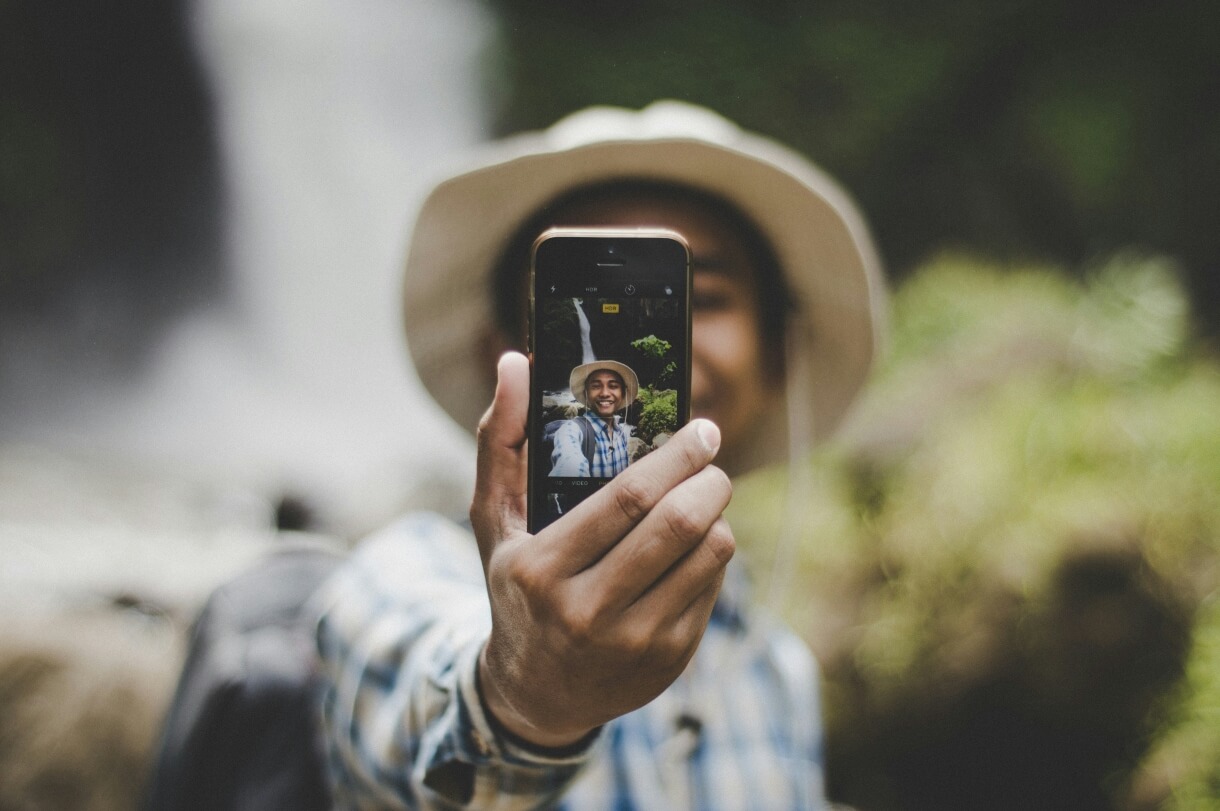The concept of a travel brand strategy may seem mysterious. These two words don’t necessarily ring a bell with beginners. A business plan, website, and offer are important when starting a company. In the early years of operation, brand strategy is often overlooked.
However, the process can clarify goals and create a real, strong bond with your guests. Online and discount advertising aren’t enough anymore. To build a tribe of loyal customers, relationships, community, and mission are crucial.
Content:
- What is Brand Strategy?
- What Elements Should a Brand Strategy for a Travel Business Contain?
- Understanding your goals
- Break your goals into Smaller, Actionable Milestones
- Who Is Your Travel Brand For?
- What Does Your Competition Do?
- Give Your Travel Brand the Right Character
- Moment of truth: Is Your Travel Offer Awesome?
- How Do We Work With Our Clients
What is Brand Strategy?
A strategy is your action plan, a set of tools and tactics to help you achieve your goals. As your travel business grows, it changes along the way, helping you verify your progress.
A strategy is an investment for the long run. Success will not come overnight. You must be patient and consistent. It helps to be a good observer. This allows you to react when your assumptions are not entirely accurate. This is when a strategy comes in handy.
By systematizing all your activities, you don’t have to search blindly for what went wrong. As a result, you do not fall to the bottom of the ladder, which took time to climb. With a brand strategy, you can step back from the problem, examine it closely, and make appropriate changes.
It is unlikely that without a strategy, you have a clear picture of where you stand in achieving your goals, what works, and what doesn’t.
What Elements Should a Brand Strategy for a Travel Business Contain?
No two strategies are the same. You cannot download it from the internet or borrow it from friends. Each situation is unique, and what works for one competitor may not necessarily work for another. However, some elements are essential to help you build a strong and recognizable brand and reach the right audience. Below you will find the elements you should include in your brand strategy.
- Brand Purpose: Understanding why the business exists and communicating it to rally the team and connect with the audience.
- Brand Vision: A long-term roadmap for where the business is heading, influencing growth goals and business decisions.
- Brand Values: Core principles that guide the brand’s actions and determine its perception in the marketplace.
- Target Audience: Understanding the audience well to address their needs and problems with relevant solutions.
- Competitive Analysis: Evaluating the competitive landscape to differentiate the brand in the market.
- Awareness Goals: Establish goals for building brand awareness to ensure the brand reaches the right customers.
- Brand Personality: Creating a brand personality that resonates with the target audience and fosters customer loyalty.
- Brand Voice: Developing a consistent brand voice that aligns with the brand’s identity across various marketing channels.
- Brand Tagline: Summarizing the brand strategy into a memorable tagline
Understanding your goals
You will hear everyone tell you that your brand is not about you. It’s about your existing and potential guests. But for small travel businesses, personal motives are frequently the reason for starting a company. Therefore, if you run a small business in order for your brand to become authentic, you need to be clear what are your goals and motivations.
The key questions you should ask yourself are: What is the real reason for starting my travel brand? What is my mission and purpose?
After answering these questions for yourself, you will be able to communicate with your audience more clearly, set up measurable goals, and understand what success means to you. It will be a cornerstone for your brand strategy and a compass for everything you do in your business. In case you feel lost and confused, you will be able to go back to the root of your business and put yourself back on track.
Break your goals into Smaller, Actionable Milestones
It’s important to mention that your goals should be specific, actionable, and measurable. This way, it’s much more efficient. You also ensure that you won’t get overwhelmed by the amount of work implementing a brand strategy requires. You will also be able to track the progress and see if your strategy works.
What does it mean to be specific? In SMART planning, having a specific goal means ensuring that the objective is clearly defined and unambiguous. A specific goal answers questions such as what needs to be accomplished, who is responsible for it, and what steps need to be taken to achieve it. Specificity in goal setting helps provide clarity, focus, and direction, making the goal more achievable and easier to track progress. For instance, instead of a general goal like “increase bookings,” a specific goal would be “increase summer season bookings by 15% in the next quarter.” This level of detail leaves no room for ambiguity and provides a clear target to work towards.
Knowing your specific goal will allow you to create a list of actions that are required to achieve this goal. Again, be specific and put them in a time frame to be able to follow the progress and make adjustments along the way. Don’t forget to prioritize them. Sometimes things get overwhelming, and we tend to take on too much. Make sure that even if you won’t be able to check the box on everything, you will do what is required to move the needle.
Take your time to also identify the resources. Be aware of your financial, human, and material capacities needed to execute the plan.
Create a List of Actions: Detail the specific tasks or actions required to achieve each goal.
Answer the following questions: How much time do I need to achieve my goal? What milestones do I need to hit each quarter to move forward? What do I have to do each month to complete the quarterly plan? Which tools do I need?
Who Is Your Travel Brand For?
To turn your brand into a profitable business, you must keep in mind other people’s needs.
Finding an audience who is interested in what you have to offer is one thing. Turning them into faithful brand ambassadors is another level. You have to know what they need, what their values are, what is important to them, and what their situation is.
You can find more about creating an ideal guest profile in our free webinar: Webinar: Create a travel offer using design thinking methodology
By demonstrating that you know and understand your audience, you can enter into their memories and establish a deeper connection. People will remember you and return.
Answer these questions: Who is my perfect guest? What does he/she expect from my travel brand? What would make them trust me? Where can they find me?
What Does Your Competition Do?
One of the advantages of conducting competition analysis is that it helps you identify untapped market opportunities and differentiate your brand effectively. Finding a gap in the market enables you to identify untapped niches and address lucrative opportunities, ultimately securing a larger market share and avoiding mistakes that others have made.
Researching your competition can also give you an edge when it comes to pricing. Knowing what your competitors are charging for their products or services will help you determine what price point makes sense for your brand.
Answer the question: What are the guests’ needs that my competitors fulfill already? What do I like and dislike about their activities? How do they communicate and what language do they use? What elements of my strategy would encourage people to change their habits and choose my offer?
Give Your Travel Brand the Right Character
Building an emotional connection with customers is essential to turn them into returning guests. This can be achieved through interdependence, nostalgia, and loyalty, which evoke a strong emotional impact with customers.
We form similar relationships with brands as we do with real people. The more human a brand appears, reflecting qualities we appreciate, the more likely we are to build a strong emotional bond with it.
A brand archetype helps develop these relationships, infusing the brand with soul. The 12 archetypes brand methodology assumes that, as humans, we have certain cultural patterns that enable us to recognize human characteristics and build relationships with them.
Creating a more resonant brand is also possible by sharing a narrative that aligns with your audience, such as a transformative journey that travel offers to people.
Moment of truth: Is Your Travel Offer Awesome?
You may have a great idea for communication, brand identity, slogan, and logo, but without a high-quality product, you will find it hard to gain the trust of your customers.
Having a good offer is highly important when building a brand. A strong brand not only offers products and services but also provides meaning, which can lead to various benefits such as increased brand recognition, improved customer loyalty, positive word-of-mouth marketing, higher advertising effectiveness, lower price sensitivity, and more applicants who want to work for the brand. A good offer helps in increasing sales revenue and allows the customer base and potential customers to identify with the brand. It also helps in building trust, creating customer loyalty, boosting employee morale, and increasing customer preference. Therefore, having a good offer is essential for a successful brand building and lead generation strategy
Think about it: Is the product I offer the highest quality? What can I do to improve it? What problems might I encounter? And what are the real benefits? Why should anyone care about it?
How Do We Work With Our Clients
To assist our clients in achieving their goals, we collaborate on building a comprehensive branding strategy. Over a two-month period, we delve into the brand’s mission, target audience, and competitive landscape. Together, we craft an annual plan, incorporating all the necessary tools for seamless implementation. Contact us now to discuss how we can collaborate in shaping and elevating your brand.






